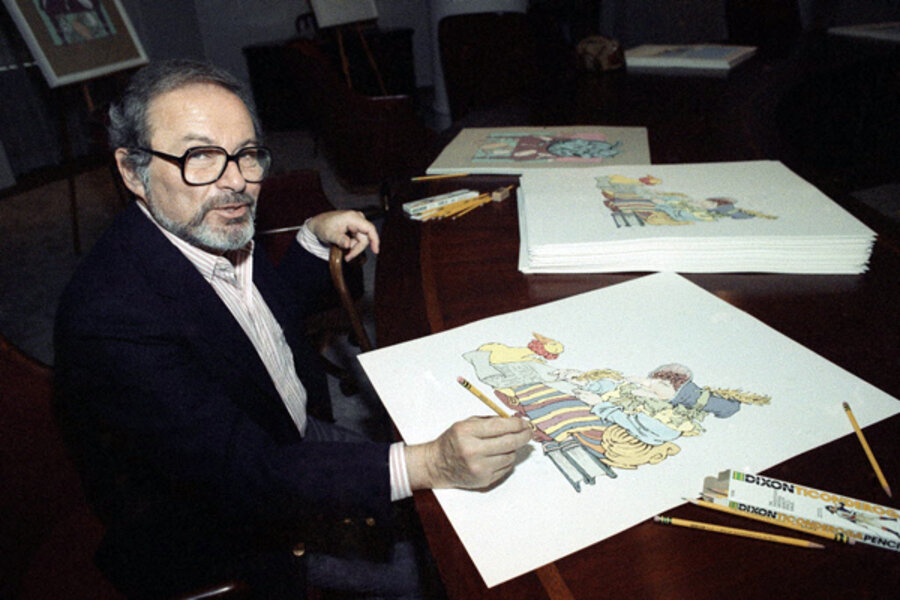How Maurice Sendak’s ‘Wild Things’ moved children’s books toward realism
Loading...
| Los Angeles
When Maurice Sendak’s groundbreaking “Where the Wild Things Are,” was published in 1963, some critics and parents grumbled about what they called its dark and nightmarish undertones.
But librarians rallied to what they saw as the picture book’s emotional honesty and psychological realism. It was awarded the Caldecott Medal for children’s literature in 1964 and – say today’s librarians, authors, and experts – forever changed the course of children’s books.
"With Maurice Sendak's 1963 classic tale of vengeful rebellion, Max and the Wild Things ushered in a new era in children's literature,” says Kathleen Horning, director of the Cooperative Children's Book Center at the University of Wisconsin School of Education in Madison.
“For the first time, authors and illustrators began to show young children the world as it really is, rather than how some adults in charge thought it ought to be,” she adds.
In subsequent years, the sort of subversiveness and humor that marked what has become a classic began to spill out in everything from picture books to young-adult series.
“Harriet the Spy,” a cheeky update on the Nancy Drew tomes, came out soon after, points out Ms. Horning. Many works with a much more realistic depiction of the childhood experience followed, she says, such as John Steptoe’s 1969 “Stevie,” featuring a young boy’s experience as his family takes in an older foster child.
“In an earlier era, a book like this would probably have focused on the joys of having an older brother,” she says, “rather than exploring the more difficult psychological issues relating to feeling displaced by a newcomer as the book did.”
Sendak was at the heart of a major shift in focus for stories aimed at children, says Teresa Michals, professor of English at George Mason University.
“Children’s literature is always trying to teach something,” she points out, adding that “Where the Wild things Are” is a “monument to that shift.”
The book marked a move toward psychological self-reference, she says.
“Rather than focusing on an explicitly didactic moment, the story is a more realistic depiction of the way a tantrum might actually play out in a home,” she says, adding that even the mother in the tale is not perfect, “but is shown losing her temper as well.”
This is in distinct contrast with the goals of earlier periods, such as the 18th or 19th century.
“A goal in those books might have been teaching children to be kind to animals for instance,” she says. “A worthy goal to be sure,” she adds, but one that reflects what adults think children should learn rather than illuminates their actual experience.
Mr. Sendak is still charging up young authors today.
He understood that the “best way to help his readers overcome their own insecurities was to show other children battling theirs,” says Meg Cabot, author of “The Princess Diaries,” via email.
Sendak showed that “children's books could both entertain and educate, but subtly so. No one closes ‘Where the Wild Things Are’ and realizes they've learned a lesson,” she says, adding that they feel only “a sense of great satisfaction.”
She says she wanted to write books like that, ones that not only entertained, but also helped kids overcome their fears and insecurities.
The lessons of “Wild Things” not only stayed with her from childhood, but opened the door to her own professional success, Ms. Cabot says.
After heading to New York upon graduating college and failing to sell her picture books, she says, “I did what Maurice Sendak taught us all to do – I turned my darkest fears into fiction, and soothed myself.” And, like Sendak, launched a highly successful career that now includes a best-selling book and movie franchise.





